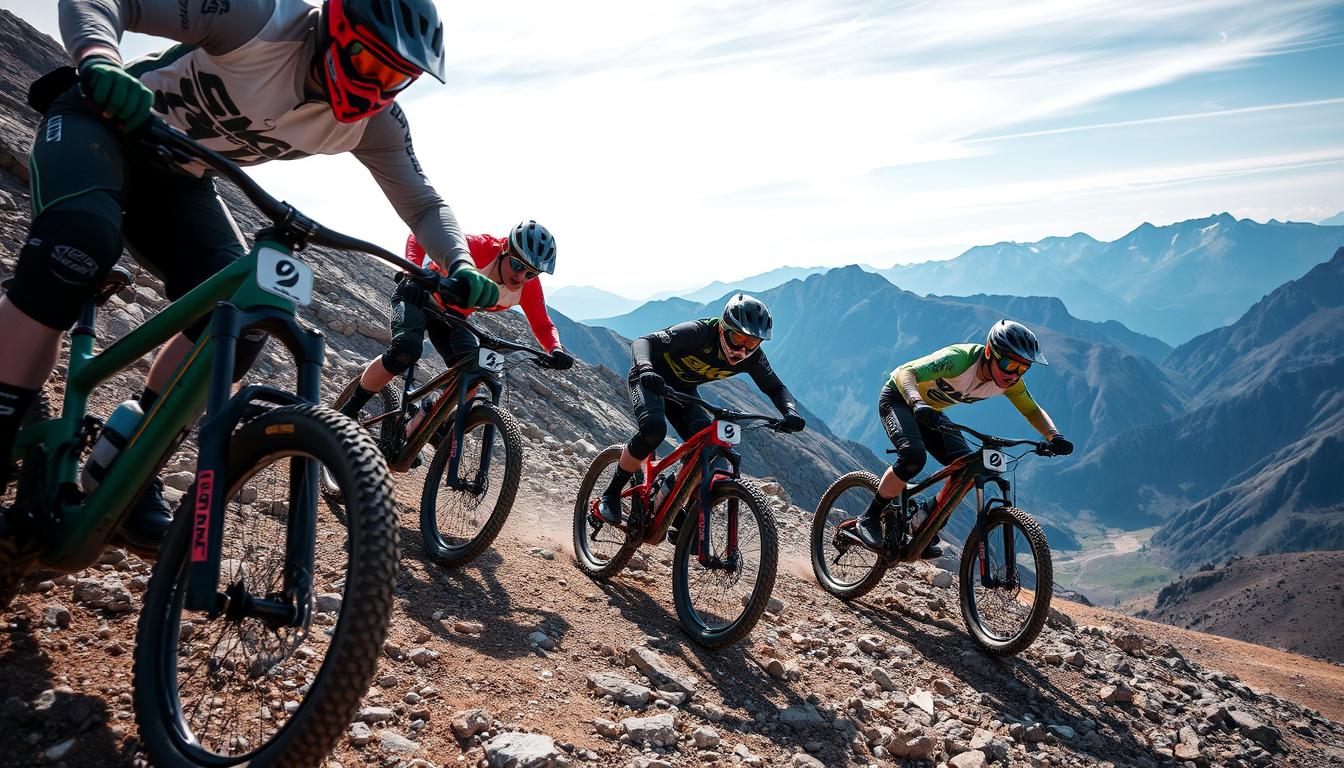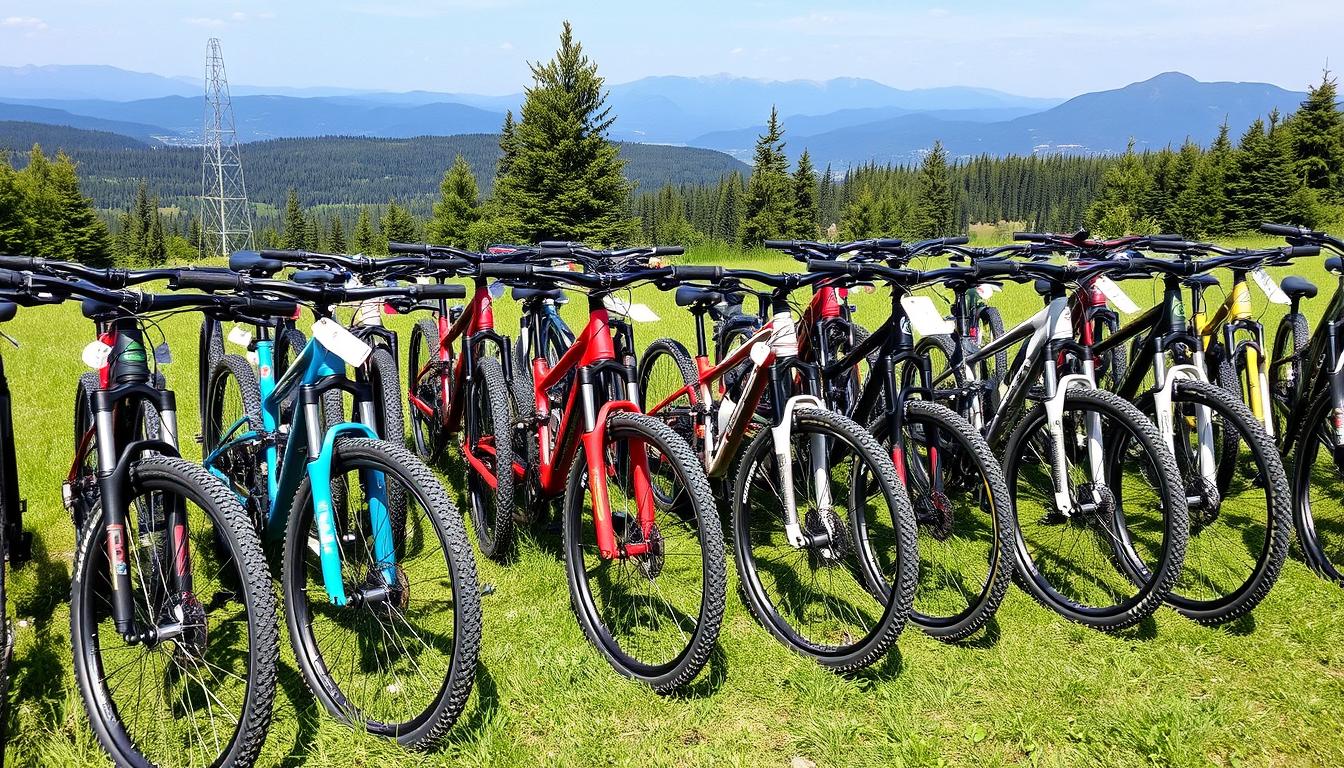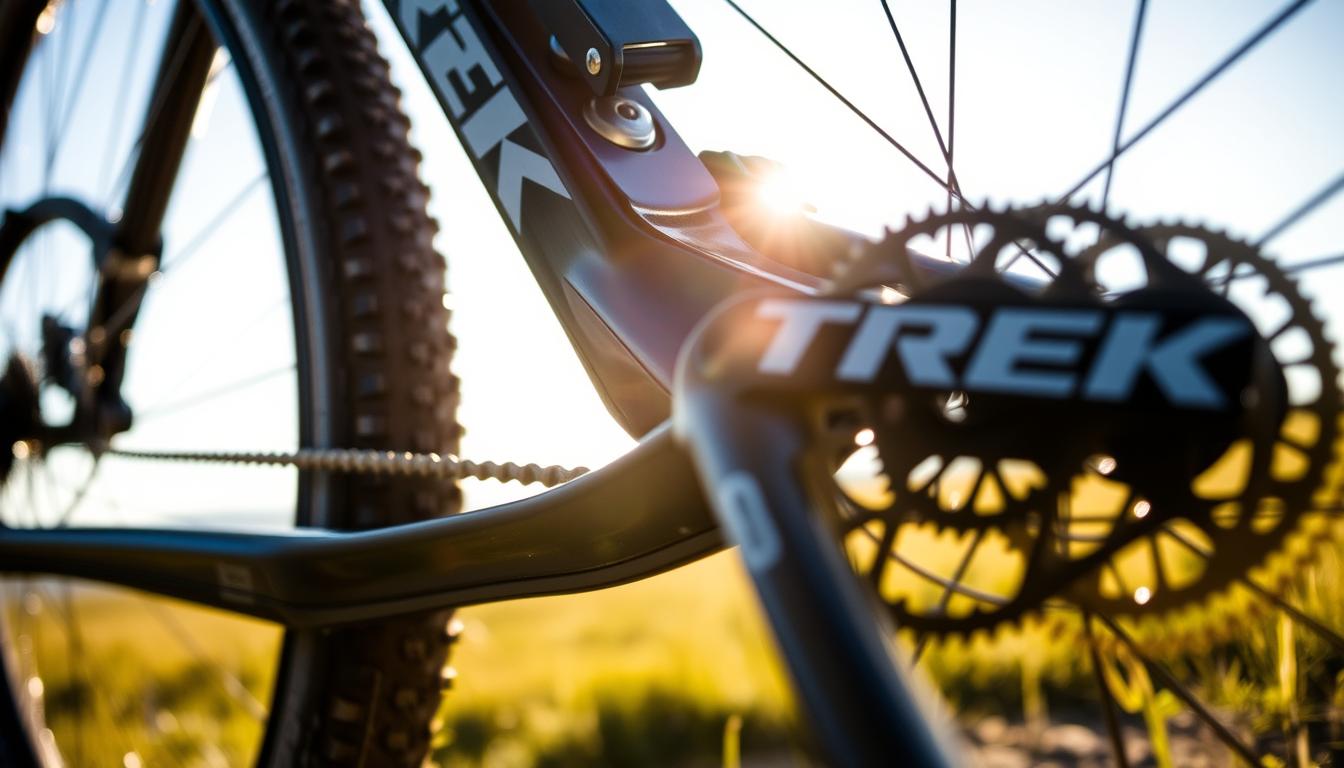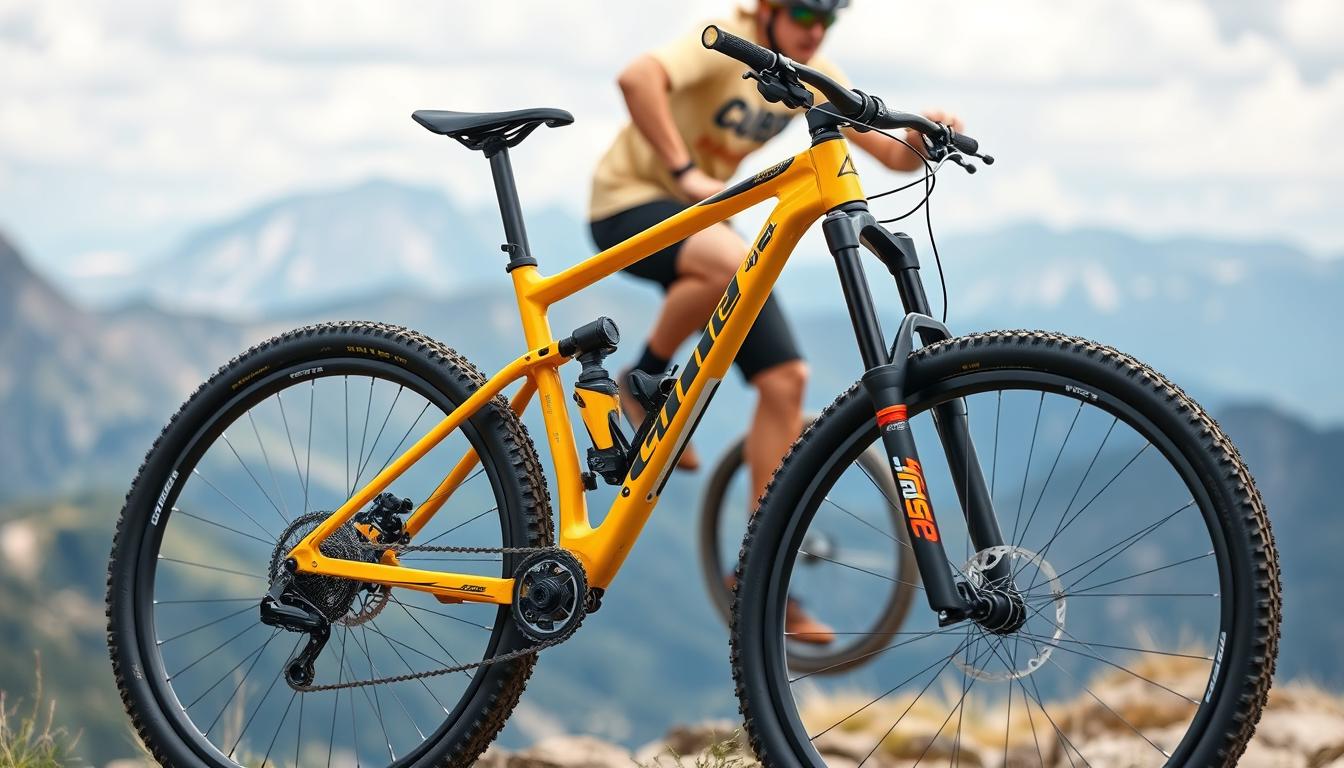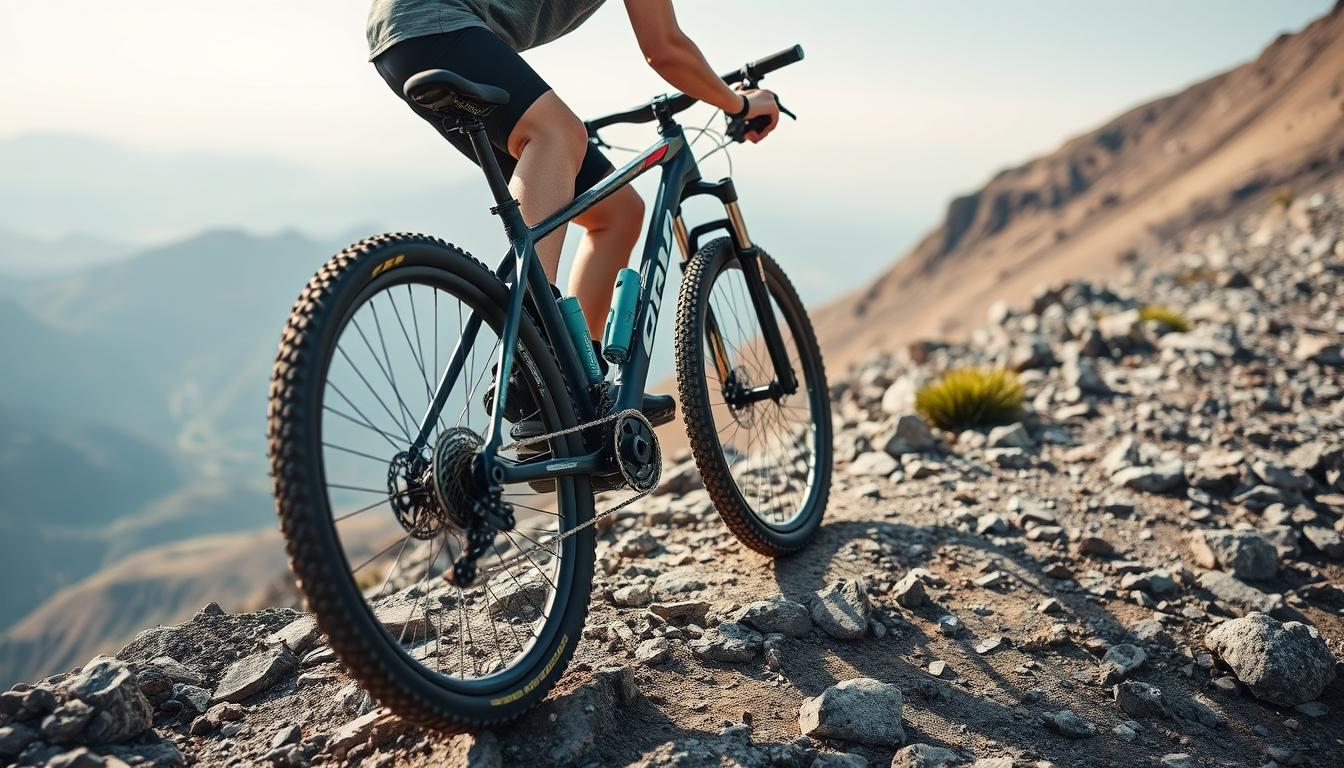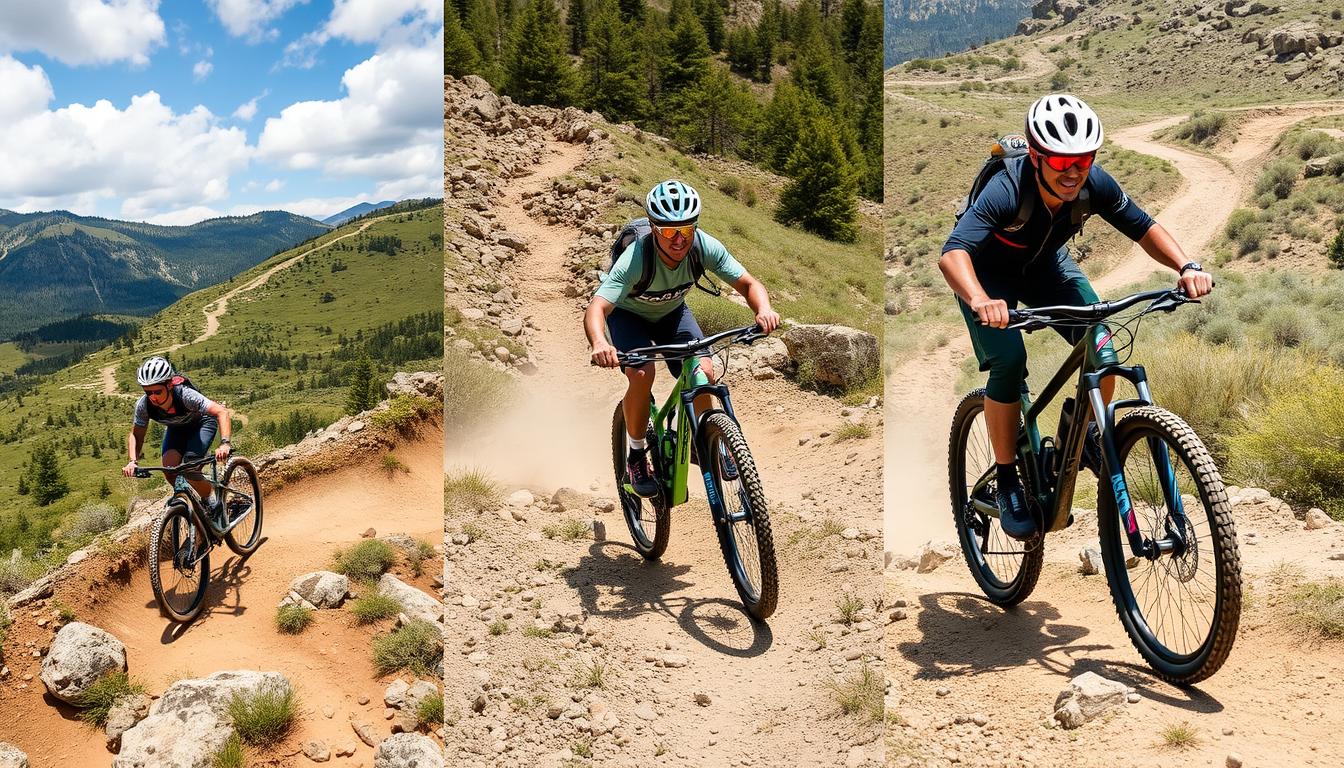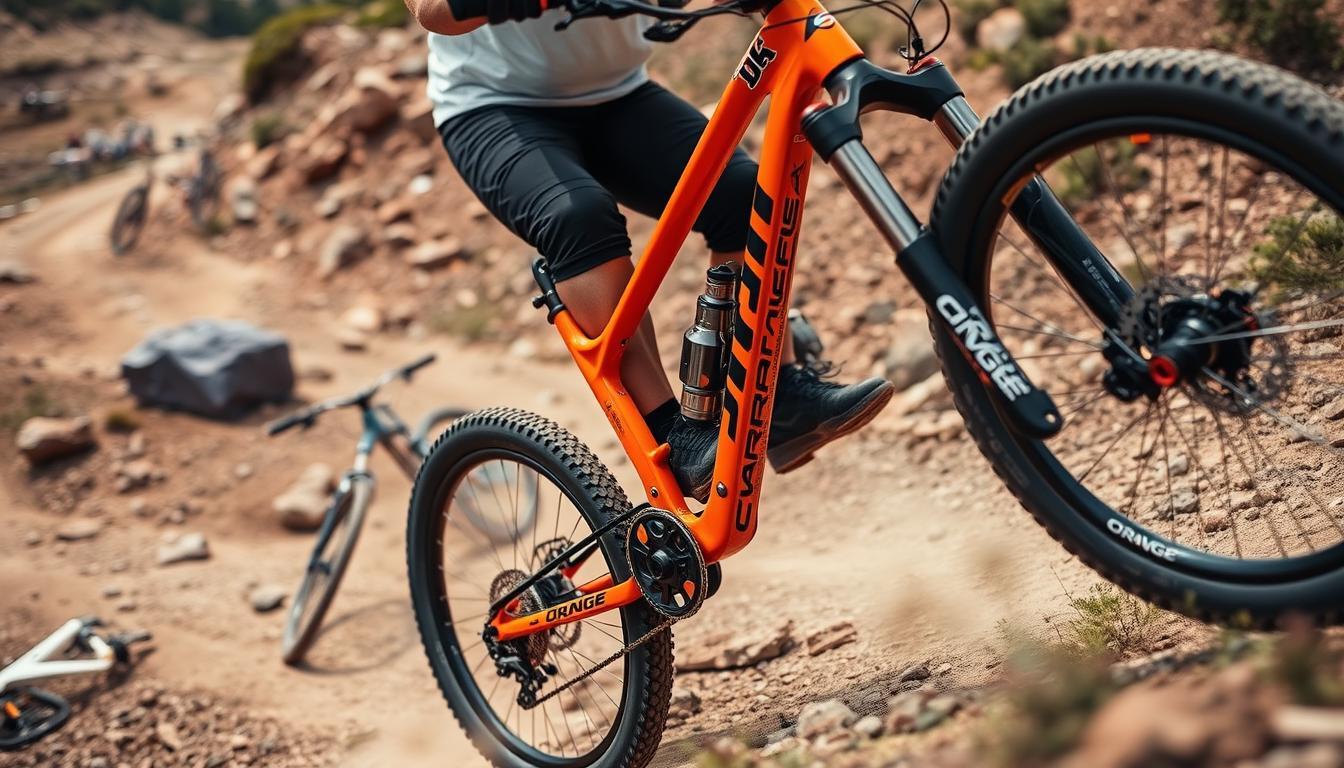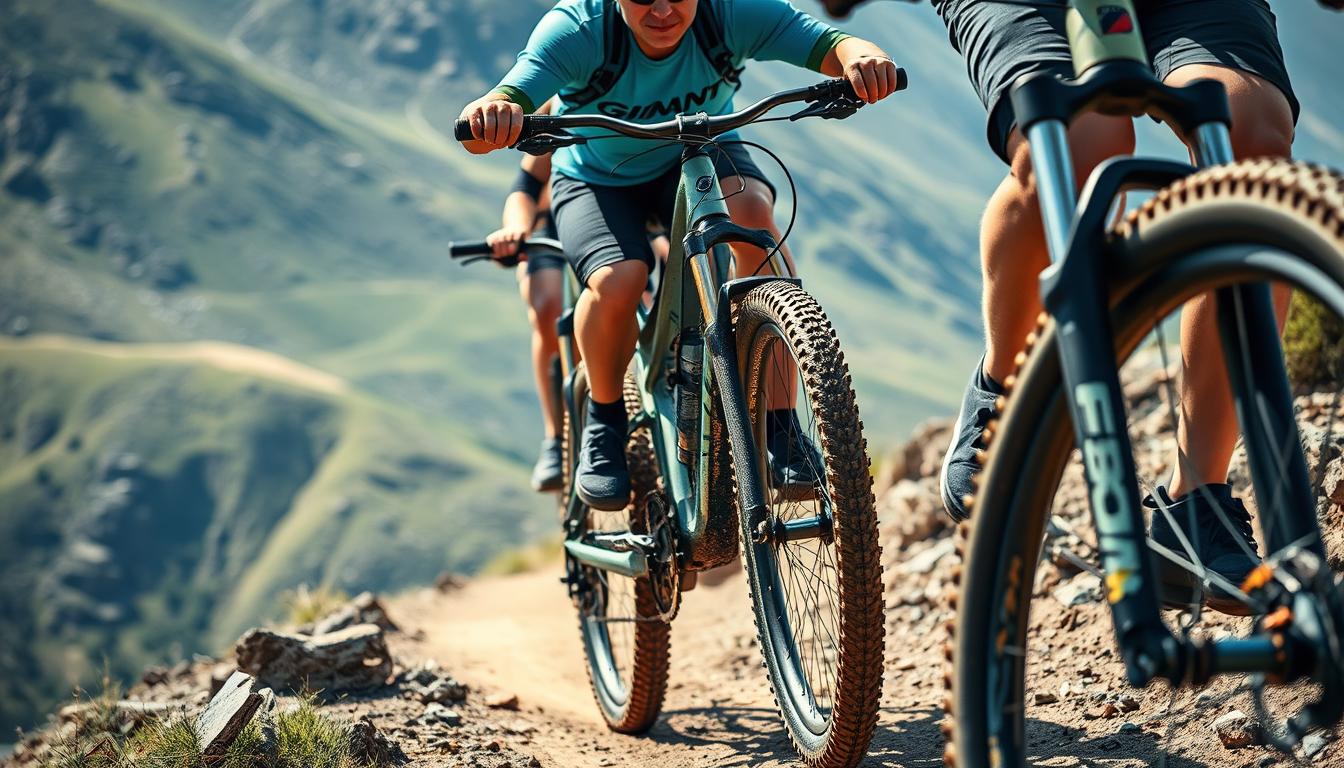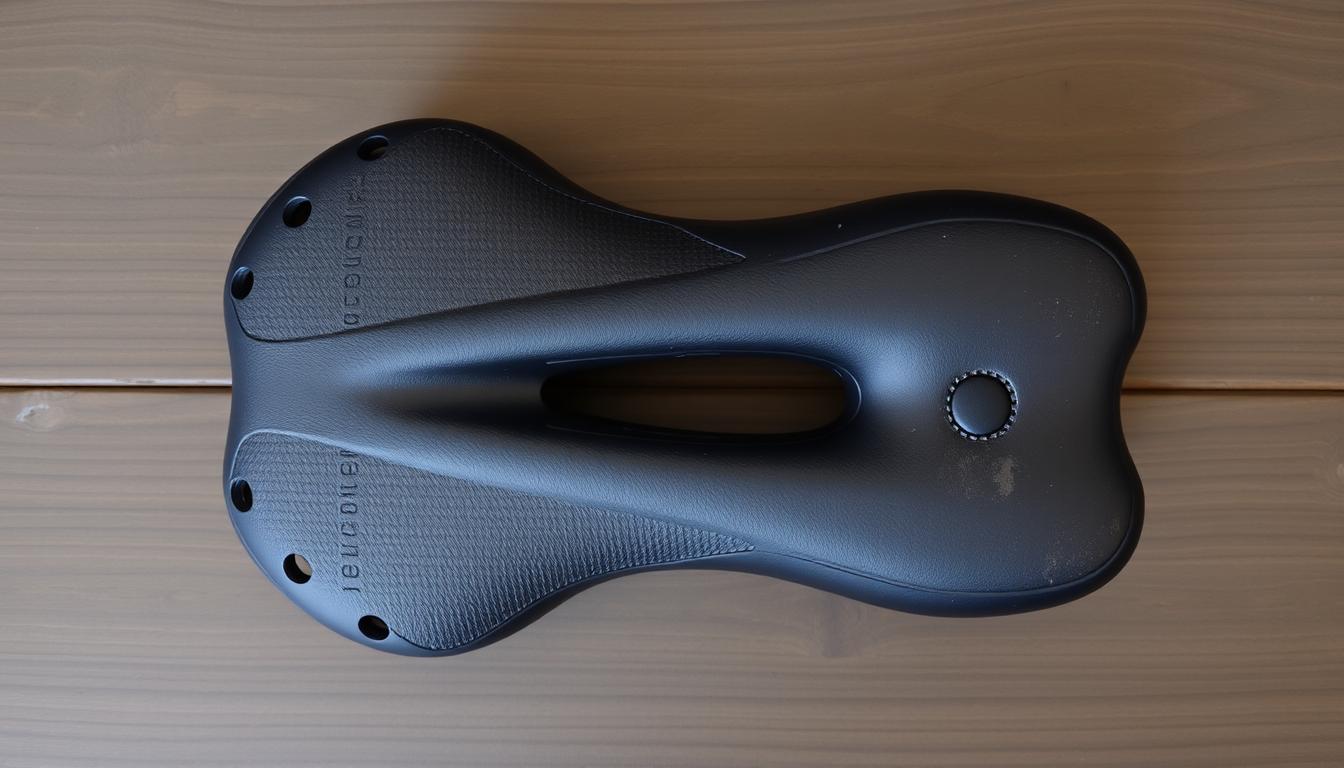Downhill mountain biking is thrilling. It combines speed with skill. Many riders love the excitement of zooming down slopes. The market for these bikes is quickly changing. You can find entry-level bikes for about £2,000. But, some top-end models may cost up to £10,000. This makes it hard to choose, especially for newcomers who want good performance and versatility.
We’ll look at top downhill bikes in this review. Models like the Giant Glory, Marin Quake, and Nukeproof Dissent stand out. They offer special benefits for those who love tackling steep trails and bike parks. For more details on these bikes and how they compare, check out this resource.
Introduction to Downhill Mountain Biking
Downhill mountain biking brings an exciting blend of speed and skill. It started in the 1980s in California and has since captured the hearts of thrill-seekers. The joy of zooming down steep paths offers a unique buzz, making it a favourite among adrenaline junkies.
Choosing the right gear is key for downhill biking. The sport needs bikes built for handling rough trails with safety and efficiency. Downhill bikes come with heavier frames and advanced features like double-crown forks and coil shocks, perfect for the sport’s demands.
Downhill biking stands out from other mountain biking styles. It skips uphill pedalling, focusing on descent. Knowing the trail and mastering obstacles like rock rolls and ramps ensures fun and safety.
Beginners must not ignore safety. Protective gear such as body armour helps avoid injuries. Riders typically use shuttle buses or lifts to get to high points before their exciting descent.
For riders looking to improve, a detailed mountain bike guide offers great advice for downhill enthusiasts. Tackling downhill challenges not only brings thrills but also boosts skills, inviting adventurers to experience this unique biking discipline.
Key Features of Mountain Bikes for Downhill
Mountain bikes for downhill have unique traits for steep drops and tough ground. Knowing these key features helps riders choose wisely.
Suspension Systems
Downhill mountain bikes boast top-notch suspension systems. They offer 180-210mm of suspension travel. This helps soak up bumps and keeps the bike steady at high speeds. It ensures a smooth ride and keeps the bike on the path, crucial for safety and comfort.
Frame Geometry and Materials
The design of a bike’s frame is key for downhill performance. A slack head angle, less than 64 degrees, offers stability on steep slopes. The material of the frame also matters. Downhill bikes often use strong aluminium or carbon fibre. This balances toughness with keeping the bike light.
Wheel Size and Tyre Options
Wheel size affects a mountain bike’s control and feel. Downhill bikes usually have bigger wheels for better handling on rough terrain. They also have wide tyres for superior grip and stability, making technical descents safer.
Top Mountain Bikes for Downhill Riding
When picking the best mountain bikes for downhill rides, some names pop up often. Riders look for reliability and high performance. Giants like the Giant Glory, Marin Quake, and Nukeproof Dissent meet these needs. Let’s explore why these bikes are favourites among thrill-seekers.
Giant Glory: Heritage Meets Performance
The Giant Glory is a renowned choice in downhill biking. It has top-notch suspension and comes from a long racing tradition. It’s great on rough terrain, giving riders confidence on steep drops. People love its stability and how easy it is to handle, ranking it high for serious riders.
Marin Quake: Versatile and Playful
The Marin Quake is known for being fun and versatile. It’s perfect for exploring different paths, thanks to its sturdy but light build. Its suspension smooths out bumps, ensuring comfortable rides on any surface. This versatility makes the Marin Quake popular for both challenging downhill trails and relaxed rides.
Nukeproof Dissent: Competitive Pricing
The Nukeproof Dissent stands out in the downhill bike market for its value. It performs well without costing too much. The bike has a strong frame and adjustable settings for various styles. Its balanced control enhances the riding experience. For those who want great performance on a budget, the Nukeproof Dissent is a top choice.
Choosing the Right Mountain Bikes for Downhill
When choosing a downhill bike, you need to look at a few key things. Think about your budget for mountain bikes, the bike’s features, and new tech. This helps make sure you get the right bike for big challenges, keeping you safe and comfy.
Budget Considerations
It’s vital to know how much you can spend on a mountain bike. The Canyon Sender CFR, for instance, might cost more because it uses top materials and technology. But spending more at first can mean you get a bike that lasts and is reliable when speeding downhill. It’s a smart buy since the bike can take on tough rides time and time again.
What to Prioritise in Performance
Think about what makes a bike perform well for you. Good suspension, up to 200mm, matters a lot for smooth rides down steep hills. Pick a bike that matches your riding skills and lets you improve.
Choosing the right frame size helps with comfort and control. And wearing the right protective gear, like full-face helmets and knee pads, boosts your confidence.
New Technology in Downhill Bikes
The mountain biking world keeps getting better with new ideas. You could go for an electric bike or something light, like the Canyon Torque. It works well on different types of ground. Having less pedal kickback means you control the bike better on sharp drops. Staying updated with bike innovations can help you choose the best one.
If you want to get better at downhill biking, looking up expert advice helps. For example, check out this detailed guide on downhill biking techniques. It’s full of useful tips.
Comparing Price Ranges of Downhill Bikes
When deciding on a downhill bike, understanding the various price points is key. The comparison highlights differences not only in cost but also in performance and quality. Each price tier offers unique advantages and potential drawbacks, tailored to fit your riding style.
Top-End Models: What Can You Expect?
Top-end bikes cost between $3,000 and $6,000. They feature the best technology in downhill biking. Lightweight carbon frames, hydraulic disc brakes, and wireless drivetrains are common. These greatly improve speed, control, and overall performance on steep descents. Brands like Santa Cruz and Trek lead this category with durable and premium materials.
Mid-Range Options: Value Meets Performance
Mid-range downhill bikes are priced from $1,500 to $3,000. They balance cost and performance well. With quality components like hydraulic brakes and full-suspension systems, they suit riders keen on technical trails without overspending. Kona and Specialized are top brands in this range, offering great performance for both beginners and experienced bikers.
Affordable Choices: Getting the Most for Less
Bikes under $1,500 are suitable for those on a tight budget. They provide a good start in downhill biking with decent quality for leisure riders. However, bikes under $500 may not withstand tough trails due to their weight and durability. Budget-friendly brands include Diamondback and Mongoose, perfect for newcomers to the sport.
Conclusion
The journey through downhill mountain biking is thrilling and filled with speed and challenges. Choosing the right downhill bike is very important. It affects how well you perform and enjoy the trails. It’s key to look at the suspension, geometry, your budget, and new tech. This way, you find a bike that suits your needs perfectly.
There’s no single “best” bike, but knowing the difference between downhill and enduro bikes helps a lot. Downhill bikes are made for steep descents. They give stability and control on tough terrains. Enduro bikes, however, are good for both going up and down hills.
Your personal style and what you enjoy in biking matter the most. Whether you love the fast pace of downhill or the flexibility of enduro, the right bike changes your experience. With the tips from this article, you’re ready to start your adventure in downhill biking with excitement.
FAQ
What are the best mountain bikes for downhill riding?
Some top picks for downhill riding include the Giant Glory, Marin Quake, and Nukeproof Dissent. They offer great performance, adaptability, and value. Perfect for enthusiasts.
Why should I choose a downhill bike over an enduro or trail bike?
Downhill bikes shine on steep descents. They provide unmatched stability and control. They’re the top pick for those who love speed and excitement on downhill trails.
What are the key features to look for in a downhill mountain bike?
Key features include suspension, frame geometry, wheel size, and tyre choices. These affect performance, handling, and comfort on downhill rides.
How much should I expect to spend on a good downhill bike?
Prices for downhill bikes can vary. High-end ones can cost around £10,000. Mid-range models balance cost and performance well. There are also affordable options for those on a tight budget.
What factors should I consider when choosing a downhill mountain bike?
Consider your budget, the terrain, your skill level, and what performance aspects matter most to you. Keeping up with the latest downhill bike technology also helps in making a wise choice.
Can I ride downhill bikes on other types of terrain?
While mainly for steep descents, downhill bikes can tackle other terrains. But, they might not perform as well on cross-country or trail routes compared to specialised bikes.
Do I need special skills to ride a downhill mountain bike?
Yes, downhill biking needs specific skills because of its speed and technical challenges. Knowing how to handle the bike and having experience with various terrains is crucial for safety and fun.
What are the advantages of newer technology in downhill bikes?
New tech in downhill bikes improves performance, comfort, and safety. Advances in materials, suspension, and brakes lead to better handling. This makes rides more responsive and enjoyable.
Is there a weight limit for downhill mountain bikes?
Downhill bikes generally support various rider weights. However, it’s wise to check the bike’s specifications from the manufacturer. Ensuring it fits your weight and style is key for the best performance.
